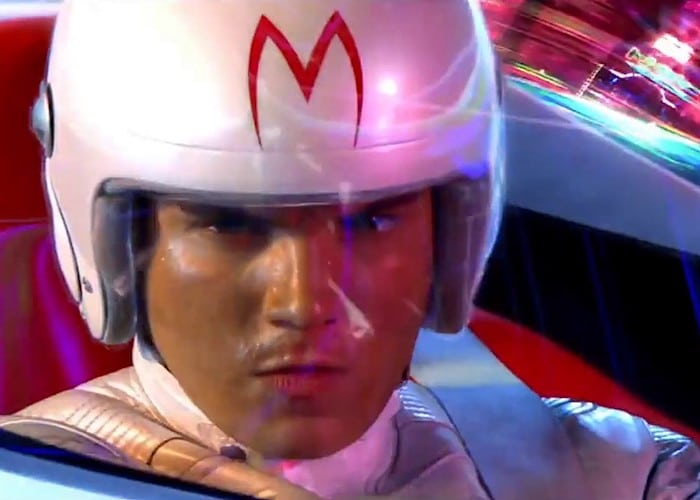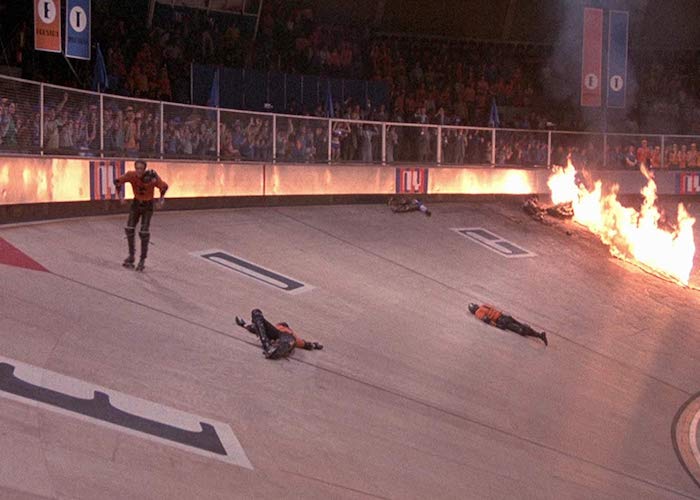Watch ‘Alita: Battle Angel,’ Then Watch These Movies
Read Article : Watch ‘Alita: Battle Angel,’ Then Watch These Movies
Watch ‘Alita: Battle Angel,’ Then Watch These Movies
Artikel Film School Rejects,There is nothing wrong with derivative movies. When people complain about something being a mashup of other things, the real issue is that it wasn’t executed well. The sum of the influences isn’t a whole new masterpiece, a la Star Wars. We can stop calling every new science fiction movie a ripoff of Blade Runner or other “better” sci-fi. There is nothing totally original in sci-fi, just an evolution of various ideas.
Alita: Battle Angel may not be the strongest progression of the genre’s familiar elements story-wise, but there’s a lot to enjoy with Robert Rodriguez and James Cameron’s manga adaptation (previously turned into an animated version that’s also recommended before or after this). Hopefully, it can be appreciated for what it is and maybe inspire audiences to seek out those similar movies of the past, not just to see better examples but to enrich a greater awareness and enjoyment of the whole genre and its concepts.
This week’s Movies to Watch After… is not comprised of outright classics. Rodriguez may be inspired by the basic essentials, and those should be a core curriculum for any movie fan. These are, like Alita, imperfect or debatably exceptional works that are worth seeing either way.
Maze Runner: The Scorch Trials (2015) and Maze Runner: The Death Cure (2015)

One of the prime reasons to watch Alita: Battle Angel is for the delightful lead performance by Rosa Salazar. But you’re not getting the whole Salazar, because the title character is a mostly CGI entity achieved through performance capture. The actress has been in a number of movies, but for scif-fi fans, the underseen Maze Runner sequels should be the next stop. The first movie is worth seeing, too, although Salazar doesn’t enter the trilogy until part two, The Scorch Trials.
Plus there are only a few things in the first Maze Runner that you need to know about going forward. The Scorch Trials and The Death Cure are more like spinoffs than sequels, even if they continue to follow the same main character. They’re set out in a very different world with very different goals and obstacles. More like Alita, they’re a more common kind of dystopian YA story of youngish protagonists needing to infiltrate and thwart a big boss in some type of fortress. As the rebel Brenda, Salazar is one of the highlights of an ensemble cast that carries the series through a scattered narrative. She especially comes alive, literally in fact, in the final chapter — it’s for good reason she’s the central figure on the poster.
Elysium (2013)

Time and time again we see new movies referred to as knockoffs of old movies that were themselves inspired by the sources of those new movies. That’s a confusing way to put it, so here’s an example: John Carter looked like a Star Wars wannabe, yet Star Wars was partly influenced by the Edgar Rice Burroughs books that John Carter is adapted from. Now we’re seeing Alita called a copy of Neill Blomkamp’s Elysium, which six years ago was criticized as being a ripoff of the Alita manga. Does that make Elysium essential viewing? I think so, not just because it has some good parts to it but also because seeing this evolution of content makes us all more literate of pop culture media.
I didn't rip off battle angel alita in Elysium moron. I have never read/seen battle angel. I come from a country with the largest rich poor gap divide on earth. It's a film about that topic. Don't @ me clown. https://t.co/bM0gFq57fb
— Neill Blomkamp (@NeillBlomkamp) December 8, 2017
Elysium was Blomkamp’s follow-up to his Best Picture-nominated breakout, District 9, and it furthered the filmmaker’s talent for world-building that seamlessly blends mind-blowing digital effects with a dusty, junky Third World aesthetic. Like Alita, Blomkamp’s original sci-fi feature involves characters on a relative wasteland Earth who wish to be up high in the sky on the utopian satellite space station where all the rich and most powerful people (including the movie’s big bad) dwell. Both Elysium and Alita also involve a more direct villain who does most of his work down on the ground. The hero of both movies is also set up with mechanical body enhancements that will help in their efforts to reach the fortress above. Maybe Blomkamp wasn’t familiar with the manga, and it’s understandable if he wasn’t since both movies have genetic material from films as far back as Metropolis and literature published even earlier.
Avatar (2009)
![]()
You’ve probably already seen Avatar. It only grossed close to $3 billion at the worldwide box office, after all, holding the top spot for all time. But do you like it? Did you love the experience of seeing it in stunning 3D a decade ago and then stopped caring when thinking just of the story later or seeing it again on a smaller, 2D format, where it just didn’t hold up as well? Avatar is a good but not great movie with extraordinary effects. Sounds like most James Cameron movies after 1984.
Alita, while not directed by Cameron, still follows that Cameron model of spectacle over substance, and that’s not to say that Cameron-produced and -directed films are absolutely terrible in the script department. He’s a good storyteller with some clunky dialogue and corny ideas, especially where romance is concerned. Like Avatar, Alita needs to be seen on a big screen in 3D, maybe a couple times, and then it can be forgotten after that. And Avatar should be re-watched and appreciated or at least remembered for the sort of cinematic experience it was and is.
Space Tourists (2009)

This week’s obligatory documentary focuses on two facets of modern space travel. On the one side, Space Tourists follows Iranian-American billionaire Anousheh Ansari on her self-funded trip to the International Space Station via the Russian Space Agency. On the other side, the film looks at the scavengers in Kazakhstan who dangerously collect the rockets that fall from the sky after they’re disconnected from space shuttles during liftoff and turn the metal into housing.
Directed by Oscar nominee Christian Frei (War Photographer), Space Tourists is the closest thing to a real-life equivalent of the world of Alita. And I’m sure Frei was thinking about that contrast when making the documentary. It’s the classic sci-fi duality of rich people getting to reach the highest of heights and the poor people down below collecting the elite’s scraps. Just watch the 2015 documentary Sky Line to see how engineers continue to think about the idea of a space elevator to know that one day, maybe billionaires will indeed get to travel and even live in an orbiting utopia a la Alita‘s Zalem while the rejects stay down in equatorial Earth dreaming of the chance to get up there — whether to be a part of that life or overthrow it.
Speed Racer (2008)

A lot of moviegoers are likening Alita to Jupiter Ascending, the Wachowskis’ ambitious sci-fi flop that some appreciate as a guilty pleasure. I think it’s more relevant to recommend the filmmaking duo’s failure before even their previous failure. After all, Speed Racer is similarly based on a Japanese property, features a track sport as part of its plot, and aims to find a balance between the colorful Japanese pop influence and the Western perspective that’s thought more accessible to a larger audience. There are no digitally enlarged eyes — you don’t need that when you just cast Christina Ricci anyway — but there are a lot of attempts at faithful character design.
While Speed Racer didn’t fare well with critics overall (40% Rotten Tomatoes score), we gave the movie an A grade. Our review immediately noted the key to a movie like this — and it also applies to Alita: “a movie to experience, not just a movie to watch. It’s a complete package with campy humor, thrilling action sequences, and emotional dramatics – all delivered through the unparalleled visual style…It’s too bad that ‘Eye Candy’ has become such a cliche, because nothing comes close to matching the dextrose-covered, primary-colored, hard-candy shell that glosses over the entire look of the world of…”
A.I. Artificial Intelligence (2001)

There’s definitely a Pinocchio element to the story of Alita, as well as a bit of Frankenstein. These are two very influential stories, both of which translate to many of the robot and cyborg tales of today. But I just recommended a version of Pinocchio recently to watch after Aquaman, and anyway Alita is particularly reminiscent of Steven Spielberg’s blatantly Pinocchio-inspired android fairy tale, A.I. Artificial Intelligence.
Both movies have main characters who are built by a man trying to replace his dead child in their image. But the hero of Alita existed in some form prior to that. See, one big difference between A.I. and Alita is that isn’t as obvious as the general plot discrepancies is that the former involves robots and the latter is full of cyborgs, meaning they’re partly organic. But the look of many of the supporting ‘borgs in Alita is very reminiscent of supporting Mechas in A.I., right down to the still impressive effects where parts of their faces are missing. These Mecha extras (Mechstras?) are also similarly shown to be part of a spectator event, although not one of sport like Motorball in Alita.
The Fifth Element (1997)

A being falls from the sky and is salvaged, only in part (a head or a hand). It’s given a new body, that of a young woman. This female-form character, regardless of the maturity of her exterior, has the mind of a naive child. She doesn’t even know to not rush out into traffic. But she’s an incredible fighter. In The Fifth Element, this childlike manic pixie dream girl will creepily become the love interest of a grizzled older man. In Alita, this manic pixie dream girl with a childlike body will gain a love interest a bit closer to her own age, especially once she garners a more grown-up physical form. Okay, there it’s kinda creepy, too.
As much as The Fifth Element is revered by many today, when it was released 22 years ago, the movie received mostly negative reviews outside of Siskel and Ebert’s appreciation of its goofiness. Back then, I was sorely disappointed with what I anticipated as the best that a follow-up from the director of The Professional (Leon) starring Bruce Willis with exceptional production design, costume design, and practical creature effects could be. But it is goofy — dopey even. Ian Holm gives his worst (only truly awful?) performance. And Chris Tucker is even more irritating. Of course, now I overlook most of the dumb script because of those exceptional visual elements, just as I was able to do with Alita right away.
Rollerball (1975) and Death Race 2000 (1975)

Fictional sports were common to sci-fi literature and television, but I don’t think there was anything like the twofer we got on the big screen in 1975. Both Rollerball and Death Race 2000, released months apart and each based on a short story, depict violent sports of the future — well, more specifically a dystopian future. Rollerball is set in 2018 and its game is an arena-based spectator match that’s like roller derby with motorcycles and balls (the recreational street version looks more like the roller-lacrosse of Solarbabies). Death Race 2000 is set in the titular year of 2000 and involves a transcontinental road race with tricked-out cars and messed up rules allowing for murdering people with your vehicle for extra points. Both movies also received terrible sequels this century.
Combine the sports of the two movies and add in cyborgs as the players and you’ve basically got Motorball from Alita. Any good story set in a dystopian future obviously needs is own violent spectator sport calling to mind the gladiator games of ancient times. They have to seem believable, even in their movies’ world, and those of Rollerball and Death Race 2000 have a plausibility that makes sense within their narratives, more so Rollerball but even as gruesome as the race of Death Race 2000 is, you never know at the rate things are truly going for the future. Motorball doesn’t look realistic at all, but it does look cool, and shockingly its action is well-laid-out and sort of easy to follow in at least a fantastically spectacular manner thanks to the strength of the directing and the visual effects.
The post Watch ‘Alita: Battle Angel,’ Then Watch These Movies appeared first on Film School Rejects.
from Film School Rejects http://bit.ly/2SNCc67
Thus Articles Watch ‘Alita: Battle Angel,’ Then Watch These Movies
You are reading an article Watch ‘Alita: Battle Angel,’ Then Watch These Movies and this article the permalink permalink is https://rivieredesparfums.blogspot.com/2019/02/watch-alita-battle-angel-then-watch.html Hopefully the article this can be useful. thanks
Tag : Film School Rejects,

0 Response to "Watch ‘Alita: Battle Angel,’ Then Watch These Movies"
Post a Comment